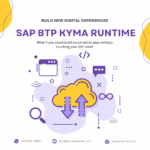SAP implementation is a transformative journey for any organization, promising streamlined operations and enhanced efficiency. However, like any major project, it comes with its own set of challenges. One such challenge often faced during SAP implementation is managing data migration—a critical step that ensures a smooth transition to the new system. In this tutorial, we’ll dive into actionable steps to tackle this issue effectively.
The Problem: Data Migration Complexities in SAP Implementation
Data migration involves transferring data from legacy systems to the SAP environment. While it sounds straightforward, it often becomes a bottleneck due to:
- Inconsistent or Incomplete Data: Legacy systems might contain outdated, duplicated, or missing data.
- Volume of Data: Migrating large datasets can be time-consuming and error-prone.
- Mapping and Transformation: Ensuring data aligns with the new SAP structure requires meticulous mapping.
- Testing and Validation: Ensuring data accuracy post-migration demands rigorous testing.
The Solution: A Step-by-Step Data Migration Strategy
1. Assessment and Planning
Start by evaluating your existing data:
- Identify critical datasets to migrate.
- Eliminate redundant or outdated data.
- Define clear objectives and timelines for the migration process.
Create a data migration blueprint that outlines:
- Data sources and destinations.
- Mapping rules and transformation logic.
- Roles and responsibilities of the migration team.
2. Data Cleansing
Clean data ensures a smoother migration. Perform these tasks:
- Deduplication: Remove duplicate entries.
- Validation: Ensure data accuracy and completeness.
- Standardization: Uniformly format data to meet SAP requirements.
3. Mapping and Transformation
Map legacy data fields to SAP fields:
- Use SAP’s Data Services tools to define transformation rules.
- Collaborate with functional teams to ensure business rules are reflected.
4. Data Extraction and Loading
Extract data from legacy systems and load it into SAP using:
- Batch Input Sessions (BDC): For automating data entry.
- LSMW (Legacy System Migration Workbench): For mapping, conversion, and migration.
- SAP Data Services: For more complex scenarios.
5. Testing and Validation
Testing is crucial to ensure data integrity:
- Unit Testing: Verify individual data sets.
- Integration Testing: Check data flow across modules.
- User Acceptance Testing (UAT): Engage end-users to validate accuracy.
Address discrepancies promptly, refining the migration process where necessary.
6. Go-Live and Post-Migration Support
Before going live:
- Conduct a final data load simulation to confirm readiness.
- Have a rollback plan in case issues arise.
Post-migration:
- Monitor system performance and data accuracy.
- Address any issues reported by end-users promptly.
Best Practices for Seamless Data Migration
- Leverage Automation Tools: Tools like SAP’s Data Services or third-party solutions can automate repetitive tasks, reducing manual errors.
- Collaborate Across Teams: Involve IT, functional consultants, and end-users for a holistic approach.
- Document Everything: Maintain a detailed log of migration steps, decisions, and issues for future reference.
- Iterate and Improve: Treat the migration process as iterative—test and refine continuously.
Wrapping Up
Data migration is a cornerstone of successful SAP implementation. By following a structured approach, leveraging the right tools, and fostering cross-team collaboration, organizations can overcome data migration challenges and unlock the full potential of their SAP systems.
Stay tuned for more tutorials and insights on navigating SAP implementation complexities!











